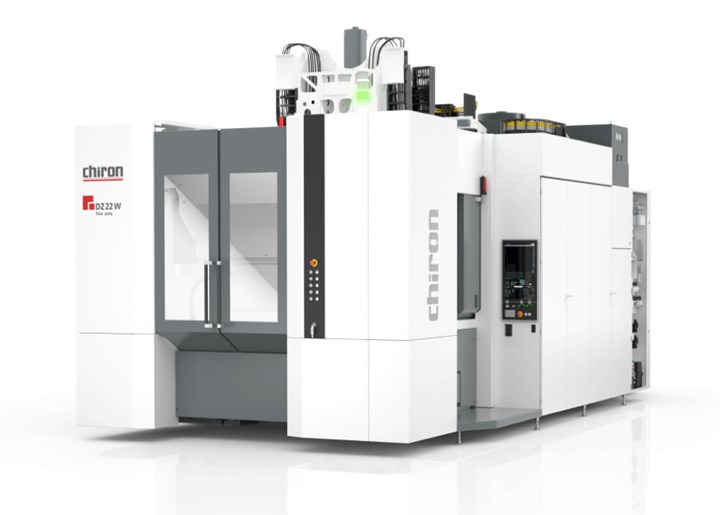What You Should Know About High-Speed Machining
The tools go a whole lot faster—40,000 rpm, perhaps—but the advantage is not parts per hour but in the ability to make precise parts with less induced stress
When you hear the term “high-speed machining,” do you think about faster operations, more parts produced per a given period of time?
While that would certainly seem to be the case, it isn’t.
Featured Content
As Robert Puhalski, applications engineering manager at Chrion America, a machine tool manufacturer with specialization in machines that perform high-speed machining, the operation is predicated on “taking light cuts at high speeds.”
Rather than taking an end mill and dialing in a deep depth-of-cut, the approach for high-speed machining is about dialing in a higher spindle RPM, using smaller tools and taking shallower cuts.
The results, Puhalski explains, include the size being held better on the part, less energy being used and less stress on the parts.
“The metal-removal rate time-wise is the same.”
Differences
There are several tooling-related differences.
For example, Puhalski points out that because the cuts are lighter, “You don’t have to lock down the parts like in low-RPM, heavier depth-of-cut machining.”
He adds, “Fixtures don’t have to be as robust. Vacuum fixtures are not out of the question at all.”

The Chiron DZ 22 is a twin-spindle, five-axis vertical machining center engineered to for parts including electric motor housing, transmission cases, oil pumps and chassis components. The machine is available with two spindle variants: one that goes up to 20,000 rpm and provides up to 137 Nm of torque, for aluminum or aluminum alloy machining; a spindle for hard materials and large tools, as it rotates at up to 12,500 rpm and provides maximum torque of 200 Nm. The axis travel distances are 620-650-600 mm X-Y-Z. Rapids are up to 120-120-90 m/min, X-Y-Z. The maximum workpiece diameter is 599 mm; the maximum height is 340 mm. Chip-to-chip time is as quick as 3.1 seconds. The machine is available with a ballscrew or liner-direct drive system. For the five-axis version of the machine there are two face plates. The maximum number of tools is 77 per spindle. (Image: Chiron)
In terms of cutting tools, he says that diamond-tipped tools are good when machining aluminum at high speeds. Ceramic tools work. As do PCB tools.
Typically, Puhalski says, the machining is performed dry. He points out, for example, when machining aluminum, the chips are so small and light that were coolant to be used, the chips stick to the fluid, causing a mess.
Not only do certain insert materials operate more effectively when machining dry, but there is another aspect to high-speed machining that facilitates dry operation: because there are lighter cuts, less heat is generated, so coolants aren’t as necessary as they otherwise might be.
Growing Auto Applicability
Although high-speed machining is more typically used in aerospace operations than in automotive, Puhalski says that there is a growing application area for the process in automotive: electric motor cases. He says the process is particularly advantageous in places where deep pocket milling is required.
“The net metal removal rate is the same,” Puhaski says of high-speed machining vs. traditional cutting. But if the part is difficult to clamp, if stresses are a concern, and if energy use is a consideration, then high-speed machining provides other advantages compared to the traditional approach.
RELATED CONTENT
-
How to Get More Efficient Production from Swiss-Type and Multitasking Machines
SolidCAM for multi-axis Swiss type and multitasking machines provides a very efficient CAM programming process, generating optimal and safe Mill-Turn programs, with dramatically improved milling tool life.
-
7 Causes of Quench Cracking in Steel
Failures of steel parts in service or production occur infrequently. However, when steel parts fail, the consequences are dire. Here are seven ways that steel can fail as a result of quench cracking from heat treatment.
-
The Difference Between Ra and Rz
While it is best to measure using the parameter specified in the print, there are rules of thumb available that can help clear up the confusion and convert Ra to Rz or Rz to Ra.


.jpg;width=70;height=70;mode=crop)



